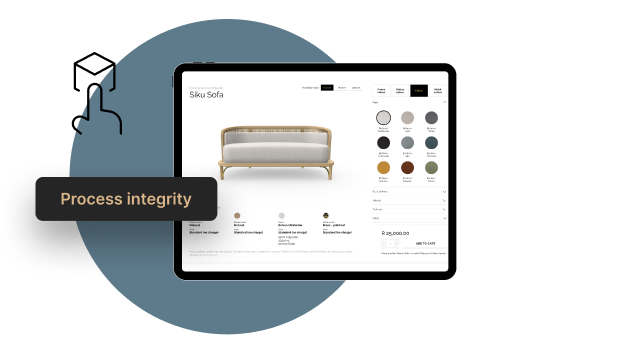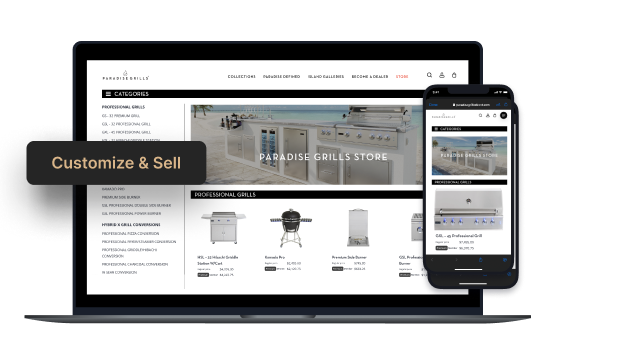The Ultimate 2025 Sofa Configuration Guide
Get your free copy todayy!

What challenges do customers in your store face when choosing and personalizing products to suit their needs? Can you showcase all product variants in real-time? How much time and resources do you allocate to this process, and how much value does it actually bring in terms of time saved and revenue generated?
In today's competitive market, capturing customer attention and retaining their loyalty is tough, especially when spending on durable goods is declining (down 3.2% in 2022). This raises the question: are we using the most effective tools to sell products? While photos and visualizations are useful in online sales, they don’t provide consumers with a complete understanding of a product's appearance and capabilities.
A 3D product configurator allows users to customize products according to their preferences. Customers can select materials, colors, sizes, and accessories while watching the product's appearance change dynamically in 3D. Once they finalize their choice, the tool seamlessly guides them to payment, booking, or a summary page.
This configurator not only opens new possibilities for high-quality 3D visualization but also automates the sales process and, when necessary, the production process. Moreover, it increases consumer engagement in the purchasing journey.
With dynamic 3D visualization, customers can see exactly how the product will look before making a purchase, helping to reduce the number of returns.

The cost of a 3D configurator varies depending on factors such as the availability of high-quality 3D models, the number of attributes and products to be configured, and integration with your e-commerce platform. It's ideal to use popular platforms like WooCommerce, Shopify, Shoper, Presta, or Magento. Today's software market makes it possible to create configurators not just for giants like Ikea or Wayfair, but also for small and medium-sized manufacturers or sellers. The digital tools market offers ample opportunities for nearly every industry, especially in e-commerce. For example, the Exclusive Spaces brand has successfully integrated a simple product configurator on the Shopify platform.

Despite market challenges like inflation and high commodity prices, the global e-commerce market continues to grow, albeit at a slower pace—up 9.7% in 2022 and projected to rise by 10.4% the following year.
According to Shopify, citing research from eMarketer and Statista, online sales are expected to reach USD 6.51 trillion by 2023, with e-commerce accounting for 22.3% of total retail sales. China leads in e-commerce sales, followed by the US, UK, Japan, and South Korea.
Using a 3D configurator in e-commerce can be a powerful tool to boost sales, not just online but also in physical stores or showrooms. For instance, the BLU or Paradise Grills configurators are excellent examples of such tools in action.



